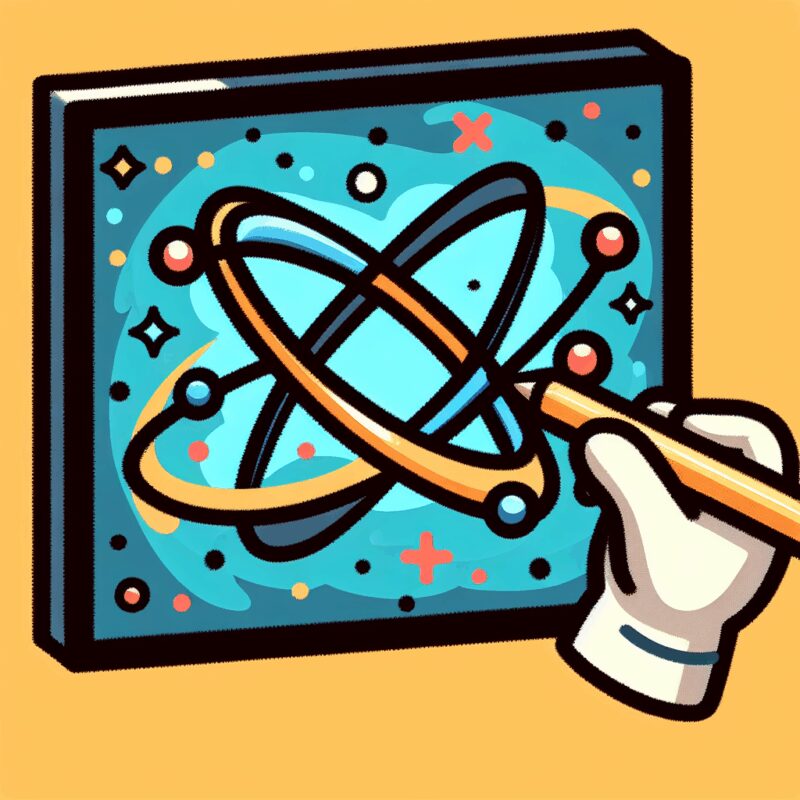
Understanding Loop Quantum Gravity
Loop Quantum Gravity (LQG) is a theory that attempts to describe the quantum properties of gravity. Imagine the universe as a giant Lego set. In classical physics, spacetime is like a smooth, continuous sheet. But LQG breaks this sheet into tiny, discrete pieces, much like a Lego set is composed of individual blocks. These blocks are loops, which is why it’s called “Loop Quantum Gravity.” The idea is that spacetime itself is quantized, meaning it has a smallest possible unit, just like matter has atoms. This theory is important because it attempts to unify general relativity, which describes gravity, with quantum mechanics, which describes the other fundamental forces of the universe.
The Concept of Quanta
To understand the area spectrum in LQG, first grasp the concept of “quanta.” Quanta are the smallest possible discrete units of any physical property. Think of it like the pixels on a screen. Just as an image on a computer monitor is made of pixels, the universe is made of quanta. These quanta make up everything from energy to matter to spacetime itself. In LQG, spacetime is not a smooth fabric but rather a network of these tiny loops or “quanta of space.” This concept challenges the classical view of a continuous spacetime and opens up new ways of understanding the universe at its most fundamental level.
Vertex Amplitude Structure in Spin Foam Quantum GravityWhat is Area Spectrum?
The area spectrum in LQG refers to the idea that the surface area of any region in spacetime is quantized. Imagine cutting a piece of paper into squares. Each piece represents a quantized unit of area. Similarly, in LQG, the surface area of an object or region in space is divided into the smallest possible “pieces” or units. These units are not arbitrary; they follow specific mathematical rules that arise from the theory. The area spectrum is crucial because it provides a way to calculate and predict the properties of black holes and the early universe in a way that classical theories cannot.
Proton Decay Predictions in Grand Unified TheoriesVisualizing the Area Spectrum
Visualizing the area spectrum can be compared to understanding the notes on a musical scale. Each note, like each quantized unit of area, is distinct and follows a set pattern. Just as musical notes combine to create melodies, these quantized areas combine to form the fabric of the universe. In this analogy, the LQG area spectrum can be thought of as a unique musical composition, with each note representing a loop or a quanta of space. This composition creates the structure of spacetime, allowing scientists to explore and understand its properties in a new way.
Singlet Seesaw Mechanism for Neutrino Mass GenerationThe Role of Spin Networks
In LQG, spin networks play a critical role. Think of them as the framework or skeleton of the universe, much like the steel framework of a building. Spin networks are graphs made of edges and nodes that describe the quantum state of the gravitational field. Each edge represents a quantum of area, while each node represents a quantum of volume. These networks are essential in calculating the area spectrum because they provide the mathematical structure needed to define the quantized units of space. By studying spin networks, scientists can gain insights into the fundamental nature of spacetime and how it behaves at the smallest scales.
Vertex Amplitude Structure in Spin Foam Quantum Gravity
Implications for Black Holes
One of the most exciting applications of the area spectrum in LQG is its implications for black holes. In classical physics, black holes are regions of spacetime with gravitational forces so strong that nothing, not even light, can escape. However, LQG offers a different perspective. By quantizing the surface area of a black hole’s event horizon, LQG provides insights into the possible “quantum” structure of black holes. It suggests that black holes might not be the ultimate end points of matter and energy but instead have a complex interior structure that could influence the universe’s evolution. This insight has profound implications for understanding the life cycle of black holes and the fate of information in the universe.
Restoration of Lattice Gauge Theory in the Continuum LimitChallenges and Criticisms
Like any scientific theory, LQG faces challenges and criticisms. One major challenge is the lack of experimental evidence. Since LQG deals with the universe at incredibly small scales, it is difficult to test directly with current technology. Furthermore, some critics argue that LQG is mathematically complex and lacks the simplicity and elegance of other theories like string theory. Despite these challenges, LQG remains a vital area of research. It offers a unique approach to understanding the universe and continues to inspire new avenues of exploration in theoretical physics.
Precision Calibration Methods in Top Quark Mass MeasurementFuture of Loop Quantum Gravity
The future of Loop Quantum Gravity is bright, with ongoing research aimed at bridging the gap between theory and experiment. Scientists are exploring ways to test LQG predictions through cosmological observations and high-energy physics experiments. There is also a growing interest in combining LQG with other theories, such as quantum field theory, to create a more comprehensive understanding of the universe. As technology advances and new discoveries are made, LQG could become a cornerstone of a unified theory of physics, providing deeper insights into the nature of reality and the fundamental forces that govern it.
관련 글: Vertex Amplitude Structure in Spin Foam Quantum Gravity
Theory of BEC-BCS Crossover and Superfluidity
[…] Deriving Area Spectrum in Loop Quantum Gravity […]